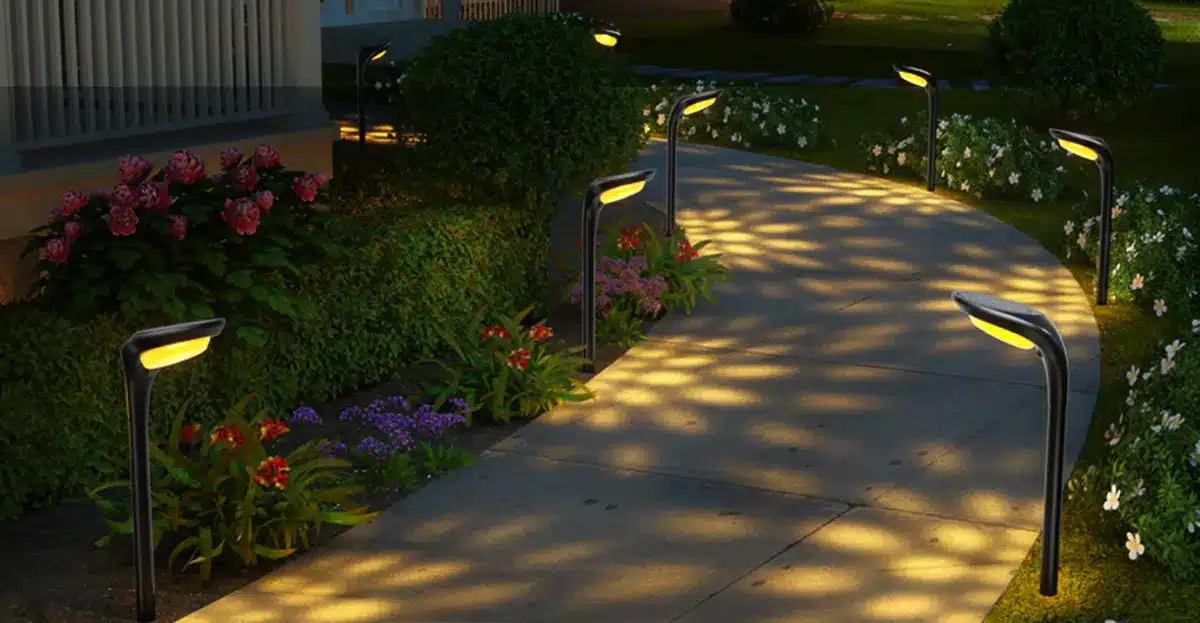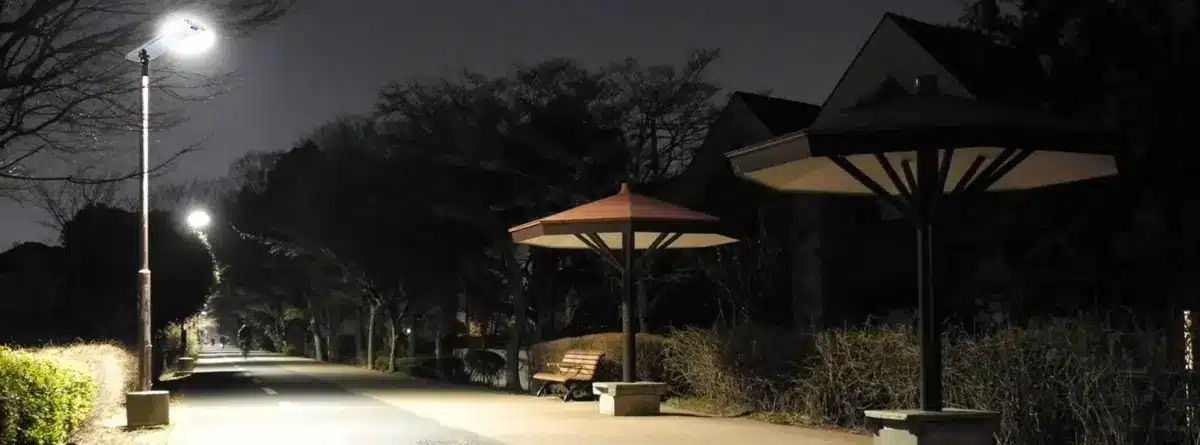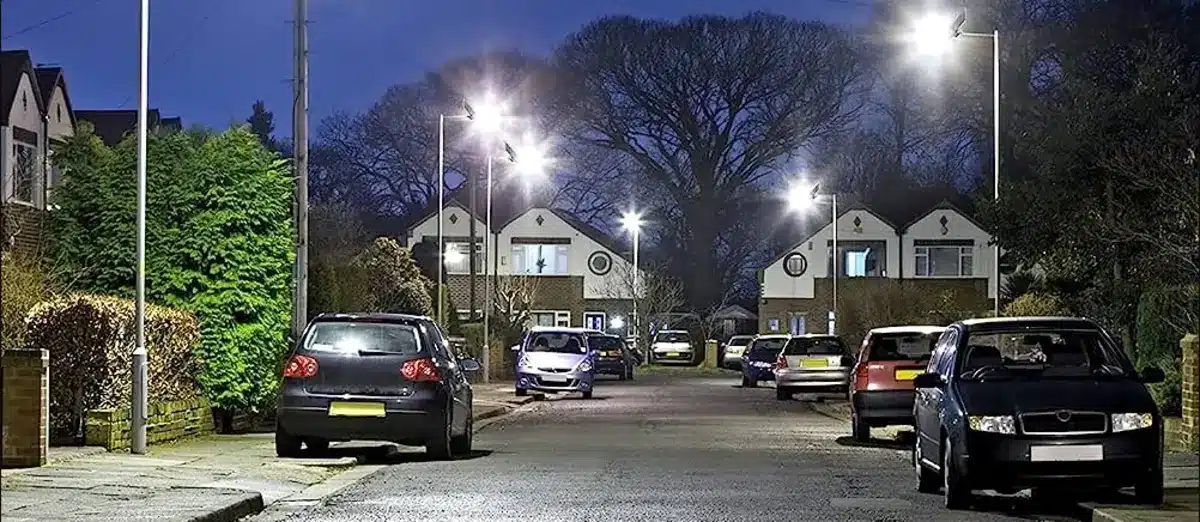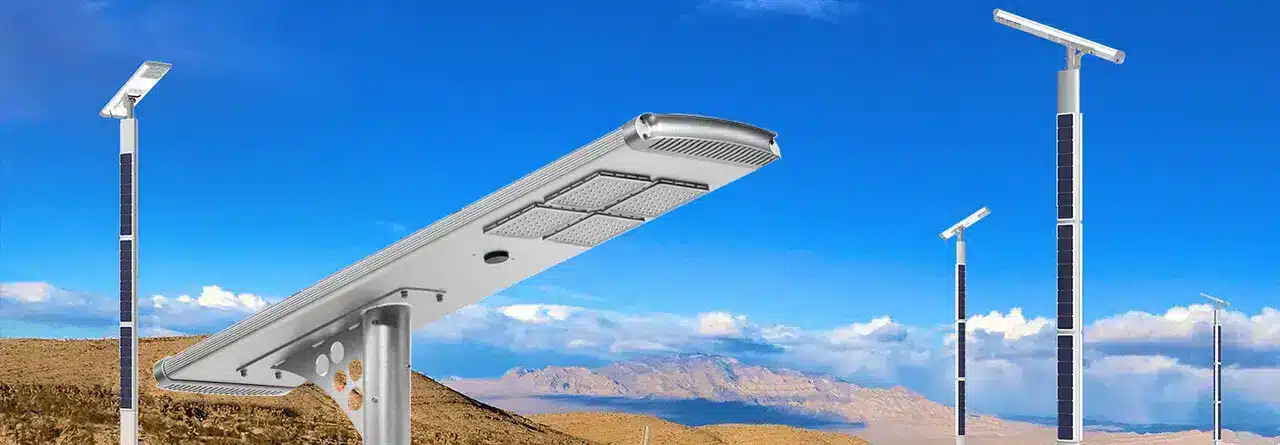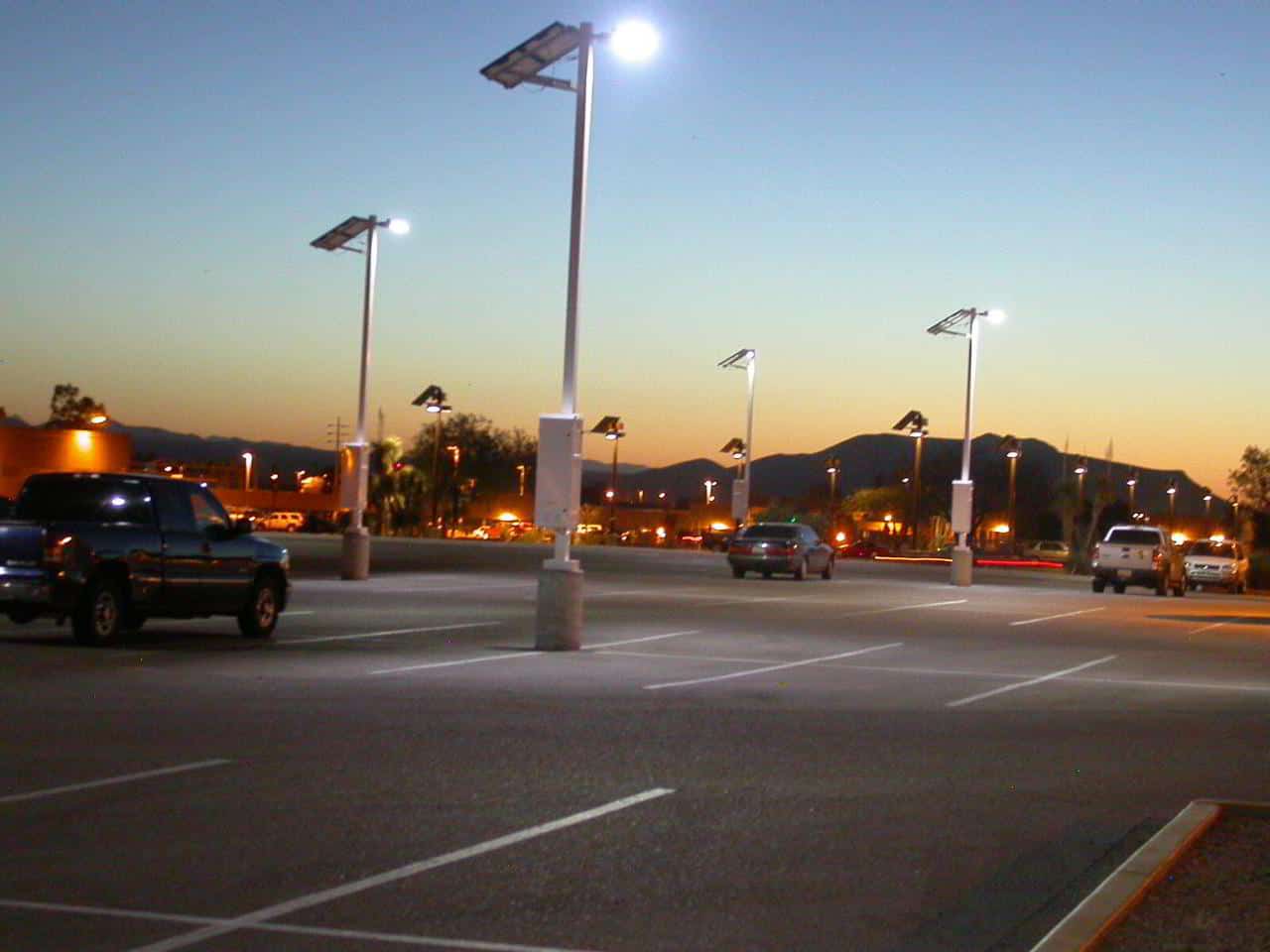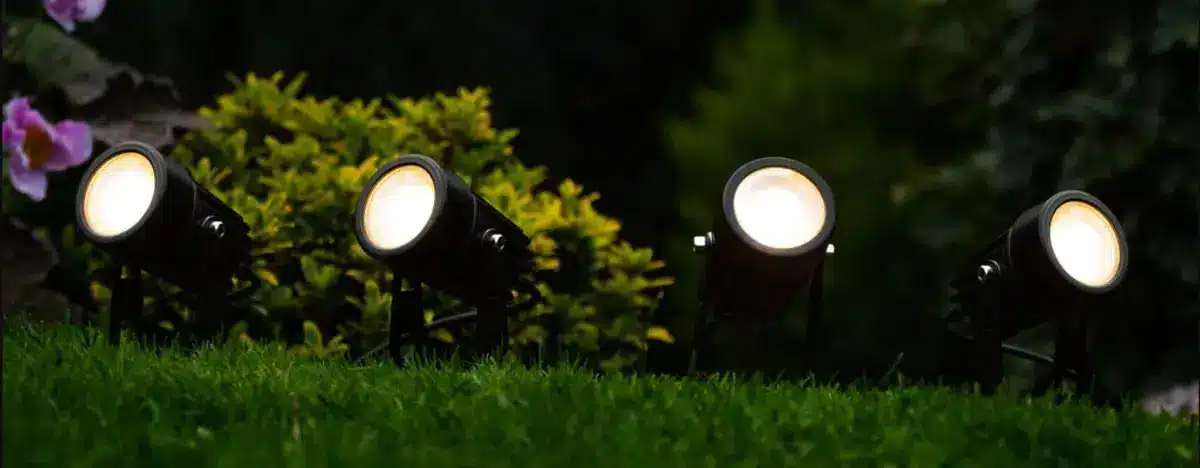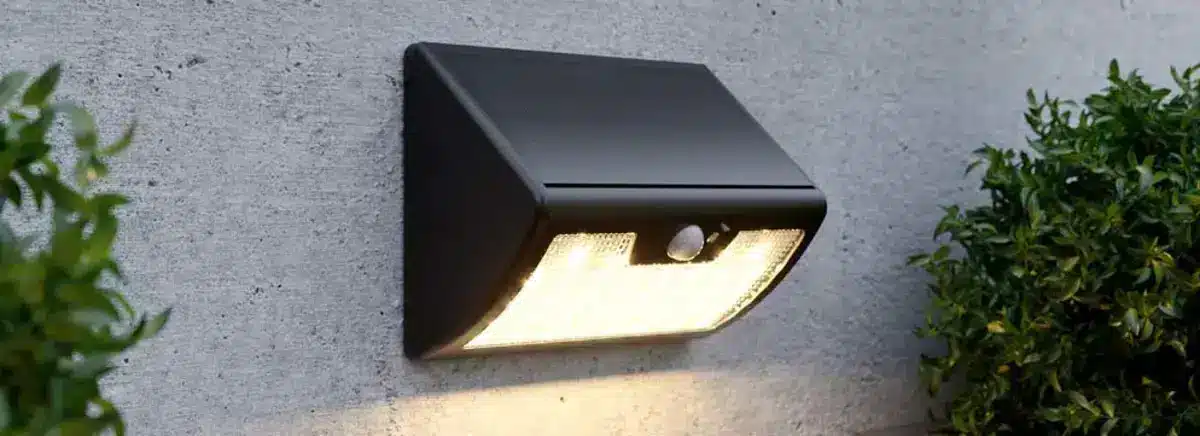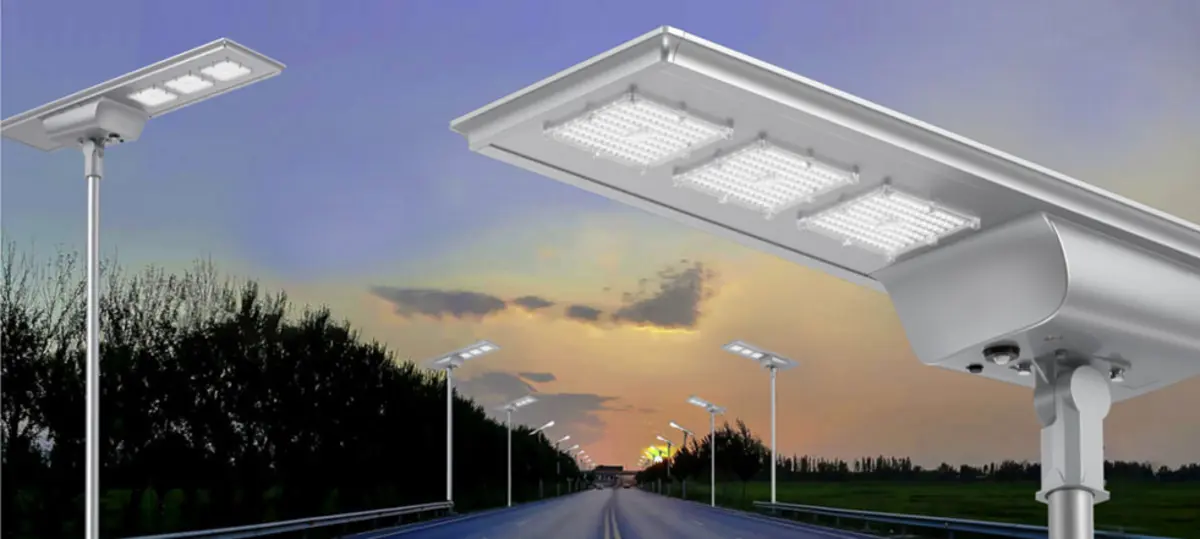
As a clean energy enthusiast and professional in the solar industry, I’ve been closely monitoring the fascinating developments and growth in the Solar Street Lighting market. This sector’s undeniable surge is driven by the global necessity to transition to cleaner, more sustainable energy sources.
Once considered a niche product, solar street lights have stepped into the limelight as a promising solution in our journey toward clean energy. Combining cost-efficiency, sustainability, and practical functionality, they epitomize the innovation we need to combat climate change and support our ever-growing energy needs.
Understanding the Uptick
One of the primary drivers of this uptick in solar street lighting demand is the worldwide emphasis on reducing carbon footprints and striving for energy efficiency. With governments globally setting ambitious emission reduction targets and businesses seeking to enhance their corporate social responsibility, solar street lights are a natural fit.
Solar street lighting is making waves from bustling urban centers to remote rural areas. Cities are witnessing the benefits not just from an environmental perspective but also in terms of cost-saving and improved urban safety. On the other hand, in off-grid and less developed areas, solar street lights are a game-changer, providing reliable lighting where traditional grid-connected options are not feasible.
Advancements in Solar Tech
But it isn’t just the shift toward green energy that’s driving the market – advancements in solar technology play a massive role too. Improved photovoltaic (PV) cell efficiency, longer-lasting batteries, and smarter light control systems make solar street lights an increasingly attractive investment.
Innovation in the LED lighting space has also contributed to the growth of the solar street lighting market. LED lights are more energy-efficient and have a much longer lifespan than traditional bulbs, making them the perfect companion to solar systems.
Economic Factors
Then there’s the economic angle. Initially, the high upfront costs of solar street lighting systems were a hurdle. However, with the steady drop in solar panel prices and advancements in energy storage technology, the total cost of ownership for solar street lights has become competitive with conventional lighting systems.
Considering the lack of electricity costs, lower maintenance requirements, and long lifespan of these systems, the return on investment (ROI) looks highly attractive to cities, municipalities, and companies.
Some Statistical Insights
According to MarketsAndMarkets™, the global solar lighting system market was valued at almost USD 5.9 billion in 2023 and is expected to reach USD 15.5 billion by 2030, at a CAGR of 14.7%.
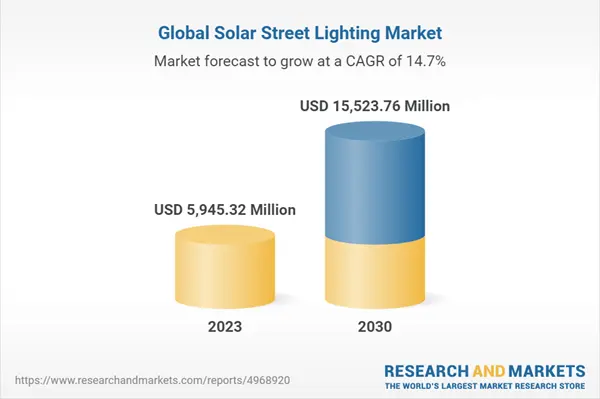
Another study by Fortune Business Insights estimates that the global solar street lighting market size was USD 5.6 billion in 2019 and is projected to reach USD 13.3 billion by 2027, exhibiting a CAGR of 12.9% during the forecast period.
According to the International Energy Agency, solar power is the fastest-growing new energy source worldwide.
The World Bank Group committed USD 1 billion for a new global program to accelerate the adoption of off-grid solar solutions.
A report by Transparency Market Research suggests that the Asia Pacific region is likely to dominate the global solar street lighting market during the forecast period (2020 to 2030) due to the high demand for energy and the initiation of new projects in the region.
Playing by the Policies
As I delved into the world of solar street lights, I found that government policies and incentives are the lifeblood that propels this industry forward. Seeing how various regions push boundaries and encourage the shift toward sustainable lighting is inspiring.
Setting up the Suns
One thing I noticed in my solar journey is how straightforward the installation and maintenance of these lights are. It’s far less complicated than you’d think, and the minimal maintenance requirements make solar street lights a hassle-free addition to any landscape. The long-term cost savings here are nothing short of a pleasant surprise!
Smart Lights for Smart Cities
In this digital age, even our streetlights have gotten smarter! Modern solar street lights, armed with sensors and network connectivity, seamlessly integrate into the framework of smart cities. The power to remotely monitor and control these lights doesn’t just spell convenience but also leads to efficient lighting usage and significant cost savings. Talk about intelligent illumination!
Tales of Solar Success
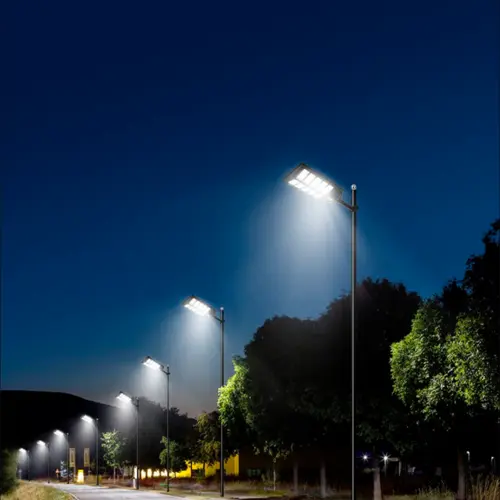
As I continued my exploration, I stumbled upon compelling case studies of cities and communities that have embraced solar street lighting. These real-life examples shone a light on both the rewarding benefits and the occasional challenges faced, painting a vibrant picture of this solar revolution.
- Los Angeles: The city launched the “LA Lights the Way” competition in 2020 to design a new standard street light, which was intended to incorporate solar power and other modern technologies.
- New York City: NYC’s Department of Transportation has installed solar-powered lighting in several parks and pathways, including the Stillwell Avenue terminal in Coney Island.
- Pacific Missile Range Facility: This high-security place leverages solar street lighting to illuminate the roads surrounding the facility, enhancing security and visibility.
- City of Dania Beach: In a forward-thinking move, the city has deployed solar street lighting systems to boost neighborhood security. Not only has this lowered their dependence on local utility power, but it also showcases their commitment to sustainable practices.
The Expanding Horizons of Solar Street Lighting Applications
Stepping out into my sunlit garden, I marvel at the energy efficiency of the solar LED lights scattered about. These aren’t just beautifying my outdoor space; they’re symbols of a solar revolution sweeping across our globe. In this blog, I want to illuminate some of the significant applications of solar street lighting that significantly impact our lives and our planet.
Street Lighting
The first place I witnessed the wonder of solar LED lighting was in my neighborhood. The streetlights no longer relied on the grid; they gathered energy during the day and lit our streets at night. It’s a smart, sustainable solution with many benefits, including cost savings, energy efficiency, and reduced maintenance. This simple transition has dramatically reduced our carbon footprint and brightened our community with a new sense of safety.
Parking Lots
I remember being surprised when I saw solar LED lights shining brightly in our local parking lot. By harnessing the sun’s energy, these parking lots are becoming more energy-efficient and increasing safety for vehicle owners. The installation and maintenance costs have plummeted, and the illumination is reliable. Solar LED lighting is undoubtedly smart and sustainable for illuminating parking lots.
Parks & Open Spaces
I frequent our local park as an avid nature lover. Imagine my joy when I saw the pathways and picnic areas lit by solar LED lights. These areas now stay bright after sunset, adding extra hours of enjoyment for all park visitors. Solar LED lighting is breathing new life into our public spaces while preserving the environment.
Signs & Billboards
One evening, as I drove past a brightly lit billboard, I noticed the small solar panel attached to it. Solar LED lighting brings a new dawn of sustainability to the advertising industry. By illuminating signs and billboards with solar power, businesses are showcasing their commitment to green practices while still capturing the attention of potential customers.
Bus Shelters & Stops
Thanks to solar LED lights, waiting for the bus at night is no longer a concern. These lights provide safety and convenience to commuters, illuminating not just the shelters but also the schedules and route maps. Solar LED lighting at public transportation hubs enhances the commuting experience while promoting sustainable practices.
Airports
If you’ve taken a late-night flight, you may have noticed a line of bright lights illuminating the runway or access to the terminal. These are solar LED lights, an essential component of modern airport infrastructure. Solar LED lighting provides reliable, off-grid illumination from the runways to the taxiways and aircraft parking areas. Their low maintenance and zero operational costs make them an ideal choice for an airport’s expansive area. With their help, airports worldwide achieve operational efficiency while significantly reducing their carbon footprint.
Military Bases
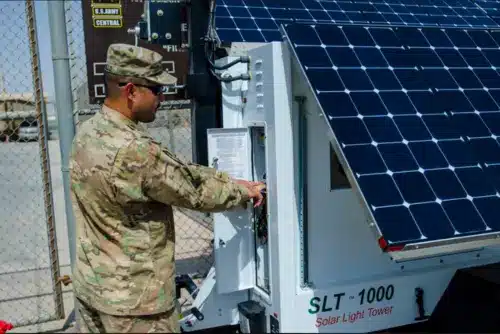
Our military bases are at the heart of our nation’s defense, and today, they, too, are embracing solar LED lighting. These lights’ energy autonomy is invaluable on remote or temporary bases. They contribute to enhanced safety, improve the bases’ environmental footprint, and reduce dependence on traditional energy sources. In emergency or conflict situations, these solar LED lights can be invaluable, offering reliable lighting without fuel supply lines. Through solar LED lighting, our military bases are becoming models of energy efficiency and security.
These applications exemplify how solar street lighting is revolutionizing our thinking about illumination. Solar power is lighting the way toward a sustainable and bright future, from our neighborhood streets to the nation’s critical defense institutions.
A Friend of the Environment
Amidst all this, what stood out to me was the remarkable environmental impact of solar street lighting. The reduced greenhouse gas emissions echo our responsibility towards Mother Earth, underlining how this technology is a powerful weapon in our fight against climate change.
From Sunlight to Streetlights: A Bright Journey through the History of Solar Street Lighting
The development of solar street lighting is closely tied to the history of solar power and advancements in lighting technology. Here are some notable points in this history:
- Early Solar Power: The ability to generate electricity from sunlight was first discovered in 1839 by a French physicist named Alexandre-Edmond Becquerel. However, the photovoltaic effect he observed was turned into a practical source of electricity in the creation of the first solar cell in the 20th century.
- First Solar Cells: Bell Labs in the U.S. created the first practical solar cell in 1954. However, these early cells were not very efficient and were very expensive to produce.
- LED Lighting: The invention of light-emitting diodes (LEDs) in the 1960s provided a much more energy-efficient light source than traditional incandescent and fluorescent bulbs. Over the decades, LEDs have become more powerful and less expensive, making them a practical choice for street lighting.
- Modern Solar Street Lights: The first modern solar street lights were likely installed in the late 20th century after solar cells and LEDs had become efficient and affordable enough for widespread use. The exact date and location of the first installation are hard to pin down, as many cities and companies worldwide were experimenting with solar power.
- 21st-Century Developments: The 21st century has seen rapid growth in solar street lighting, driven by advancements in solar cell and battery technology, rising energy costs, and increased awareness of the need for sustainable energy sources.
Solar street lighting has become a common sight in many cities worldwide and is an area of active research and development, with new improvements and innovations continuing to be introduced.
So, What Does the Future Hold for the Solar Street Lighting Market – The Future is Bright!
Current trends and future projections indicate continued growth. Market studies suggest that the market will grow at a compound annual growth rate (CAGR) of almost 15% from 2023 to 2030.
But beyond the statistics and projections, I see a world increasingly aware of its environmental responsibility and committed to action. The shift towards clean energies, especially solar, is more than just a trend – it’s an urgent global necessity.
The impact of solar street lighting is tangible and ever-expanding. Walking through my neighborhood and city, I see how these applications are not just about illumination. They’re about improving lives, reducing energy consumption, and ushering in a brighter, more sustainable future. As more applications come to light, I’m confident we’re on the right path. With solar street lighting, the future is undeniably bright. Let’s embrace it!
As I stand at the intersection of technology, ecology, and commerce, I see the growth in the solar street lighting market as a beacon of hope. It shows that when it comes to renewable energy, we are stepping out of the shadows and into the light, one street at a time!
Patriotism Shines Brighter with Solar Flag Lights
Solar Flag Lights: The Dazzling Shift from Darkness to Luminescence The night was silent, with only the hoots of an owl…
Say Goodbye to Boring Gardens: 10 Unbeatable Solar Outdoor Light
Brought to You by a Certified Solar Lighting Specialist! Ah, the magic of outdoor lighting! There’s something undeniably charming about a…
Solar Lights for Signs: An Efficient Solution for Modern Cities
Illuminating Cityscapes: My Journey with Solar Lights for Signs Welcome, fellow sustainability enthusiasts! I can’t wait to share the solar technology…
The Power Shift: Why It’s Time to Switch to a
Illuminating a New Path I’ve always loved the charm of the night, with the stars above and the city lights below….
How Clean Energy Demand is Fueling the Solar Street Lighting
As a clean energy enthusiast and professional in the solar industry, I’ve been closely monitoring the fascinating developments and growth…
Embracing the Future: My Journey With Solar Parking Lot Lighting
Since I ventured into managing commercial properties, optimizing energy usage has always been on my mind. Recently, I made a…
Brightening Horizons: The Radiant Revolution of All-In-One Solar Street Lights
Today, I’m thrilled to introduce you to All-in-One Solar Street Lights. These aren’t just lights to brighten our paths but…
Powering a Brighter Future: Solar-Powered LED Parking Lot Lights
Have You Ever Considered the Magic of Solar-Powered LED Parking Lot Lights? If not, it’s high time you did! Picture…
The Brilliance of LED Solar Spot Lights: A Personal Experience
As twilight started to wrap my modest home in its cool embrace, a radiant glow came alive in my backyard….
Understanding The Technology Behind Solar Lighting
Are you ready for a fascinating journey into the future of energy? Join me as we explore the intriguing world…


